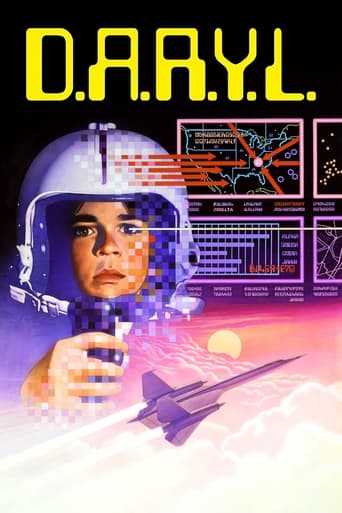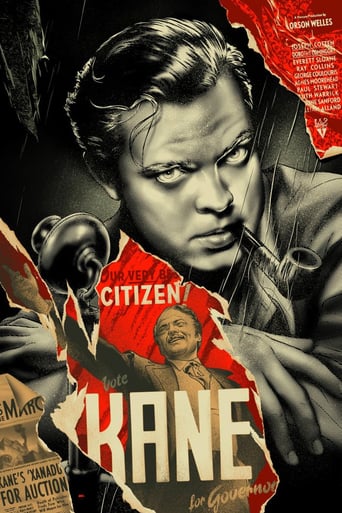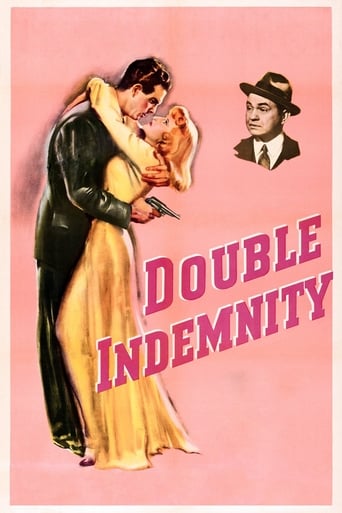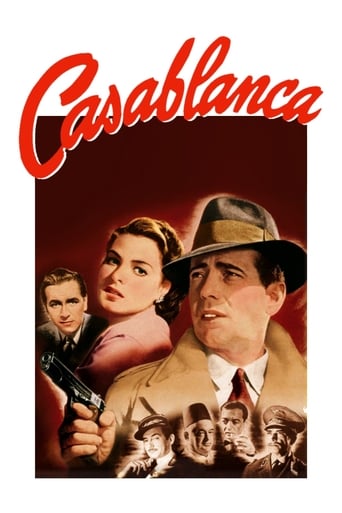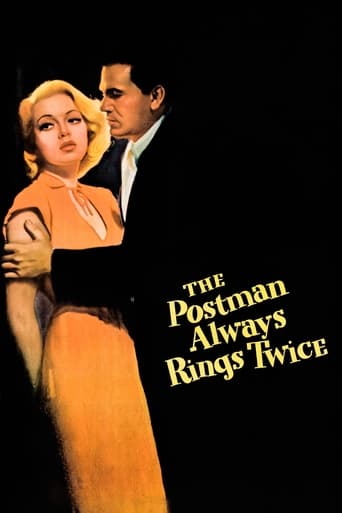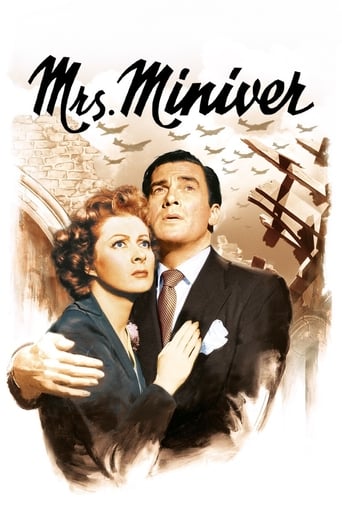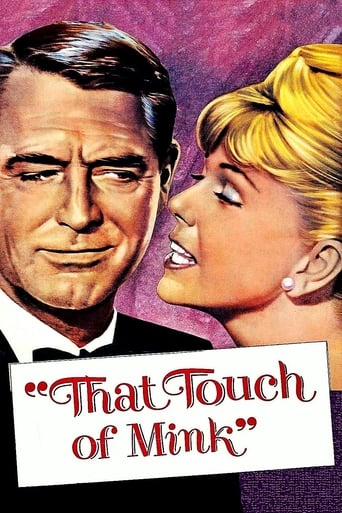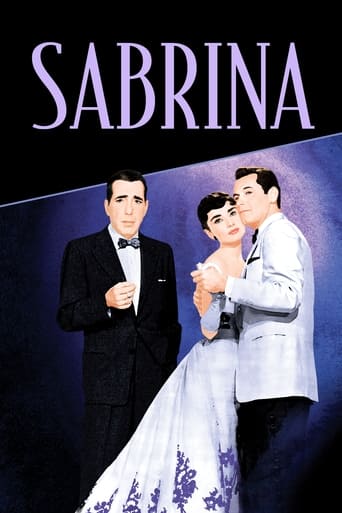


Yankee Doodle Dandy
A film of the life of the renowned musical composer, playwright, actor, dancer and singer George M. Cohan.
-
- Cast:
- James Cagney , Joan Leslie , Walter Huston , Richard Whorf , Irene Manning , George Tobias , Rosemary DeCamp


Similar titles
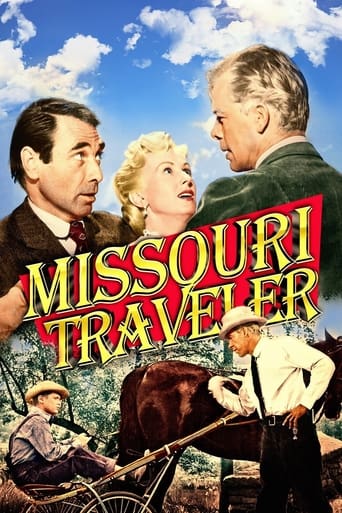
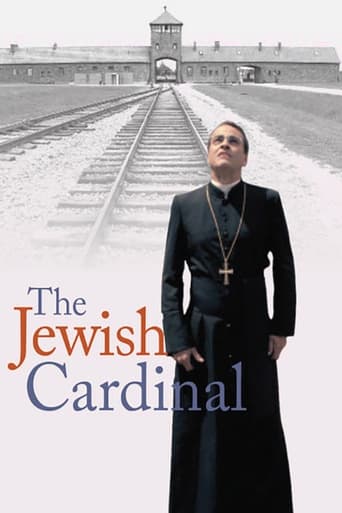
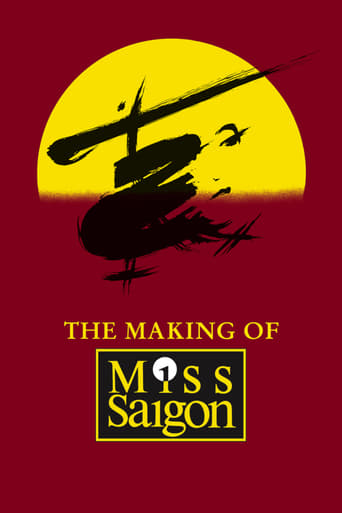
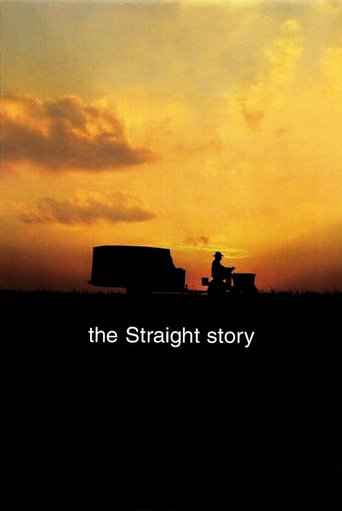

Reviews
Touches You
People are voting emotionally.
The story, direction, characters, and writing/dialogue is akin to taking a tranquilizer shot to the neck, but everything else was so well done.
The plot isn't so bad, but the pace of storytelling is too slow which makes people bored. Certain moments are so obvious and unnecessary for the main plot. I would've fast-forwarded those moments if it was an online streaming. The ending looks like implying a sequel, not sure if this movie will get one
Theatrical luminary George M. Cohan is upset that his sister has announced her intention to quit The 4 Cohans and get married. He voices the opinion that The 3 Cohans wouldn't go over with audiences. Hence, this means the end of their long established family act. Of course, GMC would go on to establish a long entertainment career as a solo, including playwriting, and directing, as well as song writing and performing. Typical of biop films of this era, many historical details are mangled, sometimes seemingly without benefit, sometimes for dramatic enhancement or simplicity. One example occurs near the end, when FDR bestows The Congressional Medal of Honor on GMC for his several patriotic songs composed during WWI. In reality, GMC received the Congressional Gold Medal, which is appropriate for civilians. The Medal of Honor is appropriate for military deeds, only. FDR says war moral boosters can be included as military-related accomplishments. James Cagney was the perfect choice to portray GMC's various theatrical talents, most notably his dancing. Cagney is so dynamic and magnetic, and the pace of the action is sizzling. Appropriately, he won the Oscar for his performance. Fred Astaire, GMC's first choice, declined on the excuse that his dancing style was quite different from that of GMC. Although Cagney was 42, he exhibited the energy of a 16 year old in his dancing. In fact, his costar as his girlfriend or wife, Joan Leslie, was 16 or 17 during production. It's called robbing the cradle. I wonder why Joan was chosen for this role? Recently, she had costared with Gary Cooper in another popular biop: "Sergeant York": an equally extreme case of robbing the cradle. Cagney does an excellent job of mimicking GMC's eccentric dance style, emphasizing foot and leg work, with diminished participation of the upper body. I wonder if Cohan derived this from Irish step dancing, which it somewhat resembles.GMC's supposed birth on July 4, alluded to several times, technically isn't quite correct. It was July 3. However, accepting July 4 heightened the flag-waving tone of the film.Together, Douglas Craft, who played GMC as a boy and young teen, and Cagney provide the majority of periodic physical and verbal humor that added much to the enjoyment of the film. Both portrayed GMC as supremely ambitious and cocky in his talents, despite frequent putdowns.Cagney had costarred in the '30s musical "Footlight Parade", as a dance instructor. No doubt, this reminded the brass of his vaudeville background, giving them more confidence that he could pull off mimicking GMC.Jeanne Cagney, James's baby sister, 20 years his junior, played GMC's sister, Never becoming a major actress, she was included in 3 subsequent films with James. Walter Huston won a Best Supporting Actor nomination for his role as GMC's father, still handsome at around 60. This was the first film that included dialogue by an actor portraying a siting president. It is also a rare musical among the many dramas, action films and comedies in Director Michael Curtiz's film resume.Curtiz was a prominent Hollywood director for 50 years, beginning in 1912 and ending with a John Wayne western. He had directed most of Errol Flynn's most remembered films(to Flynn's displeasure) and had worked with Cagney in "Angels with Dirty Faces". His next project: "Casablanca" would win the academy award for best picture. To my mind, the present film is far more entertaining and significant, and deserving of this award. At least, Cagney won the Best Actor award. Curtiz had a reputation as being hard on his actors, but reportedly mellowed a bit for this film. Apparently, Cagney's very difficult dance part way down the White House stairs was ad libed, and left in.The dialogue between GMC and Eddie Foy is amusing, each making disparaging remarks about the other without knowing whom they were talking to. Cagney would reprise his role as GMC in the 1955 film "The Seven Little Foys" Walter Catlett, playing within his typecast strength, is the close-minded blustery stage manager whom GMC and Mary are trying to impress in his office. Irene Manning, as a highbrow singer and actress serves as the female equivalent of Catlett, with an initial very critical attitude toward GMC, eventually reversing herself.This film kicked off a series of musical biopsy or nostalgia films in the '40s and '50s. Subjects included Jerome Kern, Cole Porter, Lorenz Hart, George & Ira Gershwin, Steven Foster, Sigmund Romberg, Eddie Foy and the Harry Ruby & Bert Kalmar team.Although GMC and FDR are portrayed as chummy, the real GMC was a far right Republican and hated FDR. Nonetheless, GMC had to wait nearly 20 years, through Republican-dominated times, to receive his Congressional medal for his patriotic WWI songs.This film could be looked upon as one in a progression of films produced by Warner in the late '30s and early '40s with either a subliminal anti-Nazi message(in the case of several early Flynn-starring films)or flag-waving films during WWII. "Sergeant York", released the previous year, shares with the present film the distinction of reviving some dramatic aspects of WWI, seemingly hoping to prepare the American public for entry into another European war.. Several subsequent Warner musicals were blatant war propaganda films. This includes "This is the Army ", "Thank Your Lucky Stars" and "Hollywood Canteen". Joan Leslie was the female lead in the first of these, as well as "Sergeant York"Of course, this film would hold up even better over time, if it had been shot in Technicolor. The same is true of a number of other top musicals during this era, including "Holiday Inn" and "Sun Valley Serenade". Yes, shooting in color was expensive and troublesome with the technology of the times, but it had been done with some far less deserving films.
Was there anything James Cagney could not do? Well known as a crime-drama actor, here he sings, dances and delivers some incredibly funny lines, to great effect.I had never heard of George M Cohan before, though after watching the movie I find it hard to believe that I hadn't. Thus, I watched this with low initial interest, thinking it is just another musical (and I generally dislike musicals). The interest for me was to see how James Cagney fares in a musical.Turns out it is much more than a musical. It is a great biopic, with the story of the life of George M Cohan very well told. Most biopics some across as dry History Channel documentaries - this was nothing like that. The scene sequence is innovative, the dialogue very fresh, snappy and often funny, the music entertaining. I even liked the dancing (very rare for me!). Despite being over two hours long, the movie moves at a very fast pace. Not a dull moment at all.As mentioned, James Cagney is superb in the lead role, and well deserved his 1943 Best Actor Oscar (his only Oscar, it would turn out). Well supported by Walter Huston and Joan Leslie, and the remainder of the cast.Only negative is that it is a tad jingoistic. Then again, it was produced in 1942, thus was made as a US war propaganda movie, as the US had just entered World War II.
"A man may give his life to his country in many different ways, Mr. Cohan. And quite often he isn't the best judge of how much he has given. Your songs were a symbol of the American spirit. 'Over There' was just as powerful a weapon as any cannon, as any battleship we had in the First World War." That's a terrific piece of dialogue from the President of the United States Franklin D. Roosevelt (Cap. Jack Young) addressed to legendary Broadway songwriter and performer George M. Cohan (James Cagney) in director Michael Curtiz's 1942 musical biopic "Yankee Doodle Dandy". It follows the life of George M. Cohan starting from when he was born on the 4th of July (though a source I looked at says it's actually July 3rd). Amongst the big life events we follow Mr. Cohan through include joining his parents (Walter Huston, Rosemary DeCamp) and sister (Jeanne Cagney) in the family's vaudeville act as a young and cocky kid, meeting his future wife Mary (Joan Leslie) who is also in showbiz, and his successful partnership with struggling writer Sam Harris (Richard Whorf) in producing one popular musical production after another. Let's talk a little bit about the history of the picture's main actor, James Cagney. By doing this, it will help us understand what makes his portrayal of George M. Cohan so remarkable. Before this role, Mr. Cagney was best known for playing either gangsters or tough guys. Some of his best remembered roles included gangster pictures such as "The Public Enemy" (1931), "Angels with Dirty Faces" (1938), and "White Heat" (1949). By keeping this in mind, one can understand why an actor used to playing bad guys wouldn't seem like the ideal choice for playing a patriotic musician. It's difficult enough for an actor to try acting in a different type of picture. It's even more challenging for an actor to make us forget about what they did before throughout a role that's out of their comfort zone. But even with all these forces against him, James Cagney managed to pull off this role surprisingly well. Granted, we see that Mr. Cohan was a little mischievous when he was a young lad, whether it was carelessly interfering with a business conversation between his parents and a theatrical agent or testing out a song he wrote against the theater manager's wishes. Aside from that, you always got the sense that this person could do no wrong. I say that because he was not only a big sensation on Broadway (though maybe not with the critics apparently), but he was also a generous family man taking care of his family, wife, and business partner. From Cagney's performance, you got a sense that Mr. Cohen was looking out for the average Joe whether it was with his inspiring songs or his loyalty to the United States of America. If I were to explain why "Yankee Doodle Dandy" was on the list of the AFI's greatest films, it would be because of James Cagney's work since it proved that actors aren't limited to one film genre. Because this is a biopic about a famous musician, naturally we get a good variety of musical numbers, all of which were written by the real- life George M. Cohan himself. Obviously, the songs are very well done with the notable standouts being "Over There" (A song that helped motivate the troops during World War I), "Yankee Doodle Boy", "Give My Regards to Broadway", "For The Record" (A number with charm and energy to spare), and "You're A Grand Old Flag". All these numbers are given the high-end production values and quality sets that they deserve. The presentation of the "You're A Grand Old Flag" number particularly comes to mind when naming a number that has tremendous production value. The massive amount of people in the background, the camera angles, the scope of the sets, it's all there. They truly don't make musicals like this or any other musicals from that era any more. I have to admit though that while George M. Cohan and Mary are well- rounded characters, I was very underwhelmed by the other characters in this story. Specifically, the development of Mr. Cohan's family save for the father seemed hastily rushed. When certain plot developments came around in the second half, I felt they all went by a tad too quick and a bit out of nowhere. Because of this, the development of the mother and the sister felt very lacking and unsubstantial. There was also a big death scene with a major character in the film's second half that I found a tad problematic. The reason being was that I was more convinced that this person was exhausted from a hard day's work than undergoing an actual death. Nothing's bad about these characters as they are. They just simply needed more screen time in able to truly leave more of an impact on me. "Yankee Doodle Dandy" – even by looking at the title alone, it doesn't take a genius to figure out how much this picture relishes the spirit of the United States of America. I wouldn't be surprised in the slightest if people viewed "Yankee Doodle Dandy" every 4th of July since it truly deserves it. And this viewer can assure you that it's not just because it loves America and what it stands for. It's also because it further proves that any actor in the U.S.A., especially James Cagney, can be in any motion picture that they desire. America is a free country, so we can do what we want. I think "Yankee Doodle Dandy" is pretty awesome for subliminally reminding us of that and that is why I'm proud to be an American. And to you I say, Happy Early Fourth of July!
The amazing piece of timing here is when Warner Bros. began work on this biography of entertainer George M. Cohan, WWII had not yet broken out. The attack on Pearl Harbor occurred the day before shooting began. When the film opened people on the home front badly needed some morale boosting, and this film gave it to them. It's just a joyous musical costume piece from start to finish with nice comic touches balanced with some sentimental moments (supposedly Walter Huston's deathbed scene had even taskmaster director Michael Curtiz crying). There's nothing in the way of real conflict or even much heavy in the way of romance between Cohan and his fictitious film wife "Mary", who was modeled after Cohan's actual second wife in some ways. Cohan was actually married twice. Oddly enough, it was Cohan who said he wanted as little romance in the film as possible.The more I learn about Cohan the more I realize that Cagney was perfect to play him - both Irish Americans, both about the same size and build, and George Cohan's style of dancing and singing were about the same as Cagney's. It's hard to believe that Fred Astaire was Cohan's first choice to play himself. Astaire was a great talent, but I don't think he could have conveyed the combination of mischief, optimism and energy that was Cohan the way that Cagney ultimately did. Several people criticize Cagney's dancing here, but that eccentric style was Cohan's, who always considered himself more of an overall entertainer than a dancer in the first place.If you're "date conscious" as I am, there are some matters of plot that might bother you. Cohan was born on July 2 or 3, not July 4. Cohan's mother outlived his father by eleven years and Cohan's father was not "very old" when he died as is said in the film - at least by today's standards. When Cohan's father died in 1917, he was only 69. Cohan's sister did die young - she was only 39, dying in 1916, plus she was not his little sister. Instead Josie was a year older than George. The film has Josie marrying when she would have been close to forty, when she actually married at the beginning of the 20th century and thus was the one to break up the four Cohans, not George. Also, Cohan received his Congressional Medal in 1936, not as WWII began as shown in the film. However the plot device of having George M. recount his life story to FDR, receiving his Congressional medal in the Oval Office, and then dance joyously down the White House stairs and into the streets joining a group of marching soldiers in a chorus of "Over There" was probably a great way to bridge Cohan's patriotic past with what was then an uncertain time that certainly needed a dose of his optimism.The one thing that I did find a little odd - and one thing isn't much in a two plus hour long movie - is that it is hard to spot the actual point in the film where Mary becomes George's wife. There is quite a bit of domesticity shown before the two were married. Mary is cooking for George, staying in his apartment alone waiting for him to come home from the show, and acting very much like they are already married. The only way you know they are not is that George very subtly pops the question to the point that I'm surprised even Mary knew what he was asking! I know this doesn't seem like much in today's world, but considering that they were trying to paint Cohan in the most positive light possible and that the living arrangements might be misunderstood, I am surprised that the censors of that time never raised the issue.At any rate, I highly recommend this one. You'll have a great time, at least in part because you can see that Cagney is having a great time. He always said this film was his favorite, and it shows in his performance.

